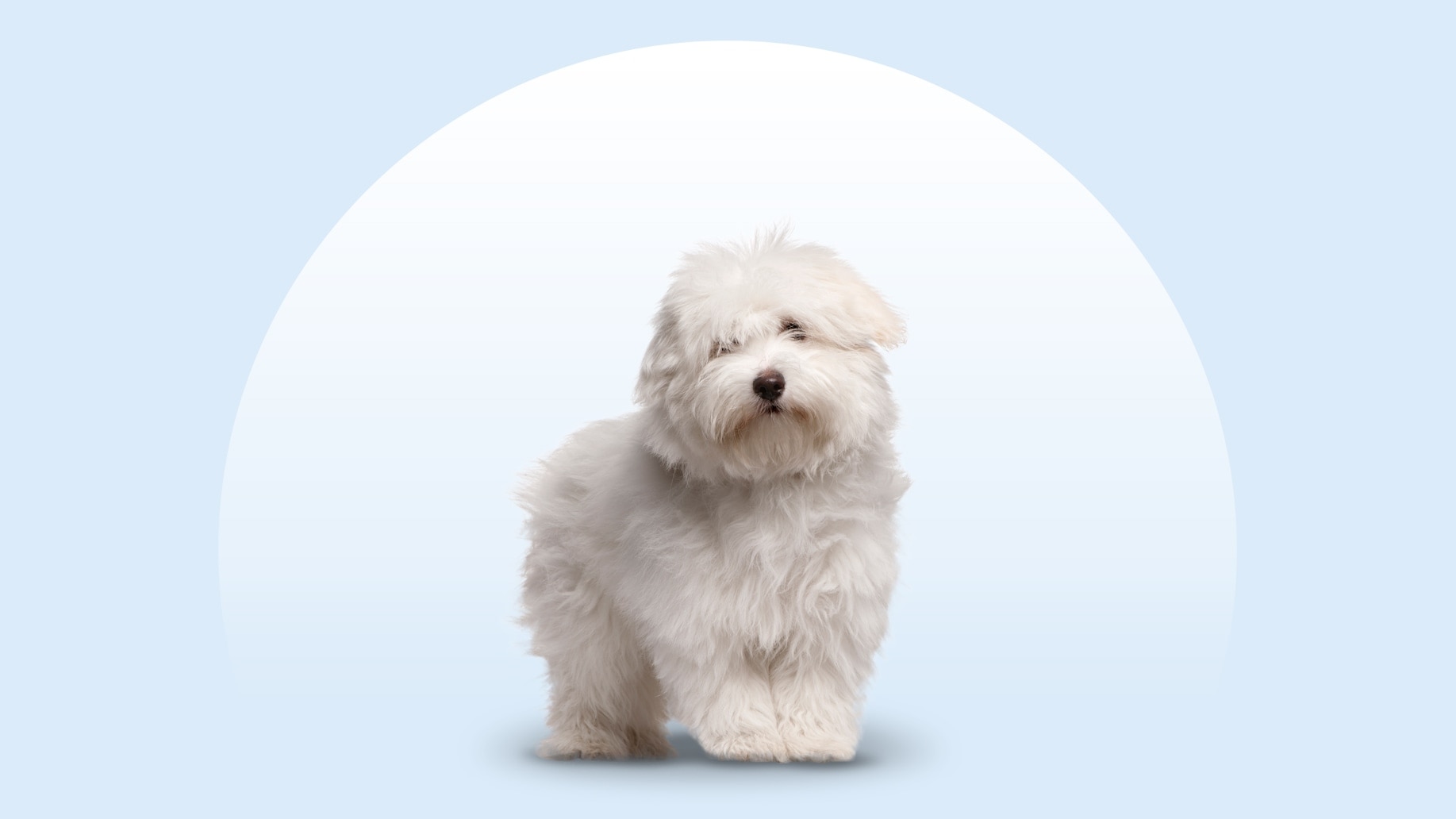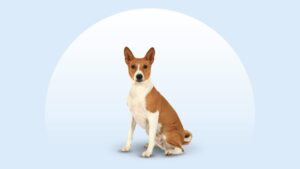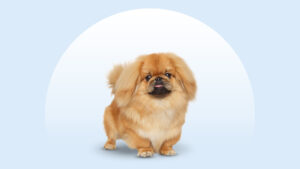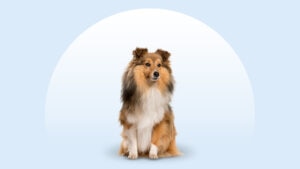Coton de Tulear
Updated December 15, 2025
Coton de Tulear
Updated December 15, 2025
Happy, easy-going and lovable, Cotons de Tulear are best for stay-at-home parents who can spend ample time with their pups. While Cotons can thrive in homes small and large, homes with a fenced yard are a plus. First-time pet parents will do well with Cotons, too.
Intelligent, Eager to Please, Charming
Male: 9-15 pounds
Female: 8-13 pounds
Male: 10-11 inches
Female: 9-10 inches
15 to 19 years
White
Don’t like to be alone? Good news: The Coton de Tulear doesn’t, either. Sociable, bubbly and cute as a button, Cotons never heard of personal space. Bred as companions for royals in Madagascar, Cotons de Tulear will follow you everywhere, bathroom included, filling your lap with a soft white ball of fluff at every opportunity. It’s just your Coton doing their Coton thing. You’ll quickly be too enamored by their witty humor and sweet personalities to let their clinginess get to you. When they forget they’re dogs and try to “talk” to you like a human, even showing their teeth in a pleased-to-greet-you smile, you might even talk back (hey, we all do it). While they’re energetic and enjoy their playtime, Cotons de Tulear are also content to curl up and cuddle while you work. Just don’t leave them behind when it’s time for a coffee break—these charmers will ensure the drive-thru barista never forgets your name again.
Coton de Tulear Characteristics
Coton de Tulear Appearance
Cotons de Tulear may look more like stuffed animals than anything else, but rest assured, they are real dogs—ones who just happen to be the perfect size to pick up and hug close while you bury your face in all that fluffy, white hair. Their sweet faces and intelligently playful expressions will make you fall instantly in love. When in motion, Cotons look like little clouds floating along with their long coats sweeping the ground and their jaunty tails leaving a wispy jet stream of hair in their wake.
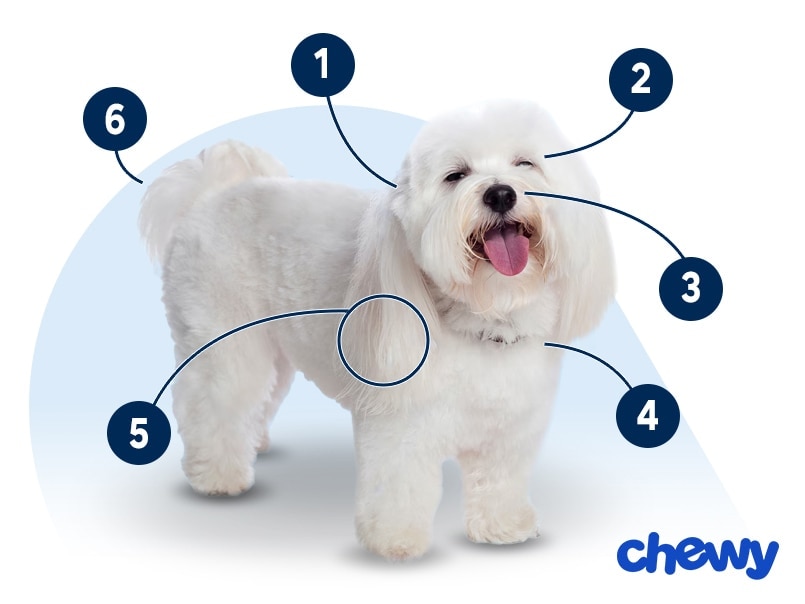
- Ears
Coton de Tulear ears are triangular in shape and hang down from the top of the head on both sides. They're covered in long hair that makes them appear to hang below the face, but the tips are actually about even with the mouth.
- Eyes
Dark brown or black, like little espresso beans, and rimmed in black, their round, wide-set eyes sparkle with good humor.
- Nose
The Coton's cute little button nose is solid black to match their lips and eyes.
- Coat Length
The Coton de Tulear breed is named after their soft, dense, fluffy coat, which looks and feels like spun cotton. (Coton de Tulear means "cotton of Tulear.") It reaches about 4 inches long all over the body and may be straight or slightly wavy.
- Coat Color
Cotons are solid white, although they may have a few light gray or light tan hairs mixed in on the ears. Coton de Tulear puppies may be born with prominent colors, including brown, rust, yellow or black, on the head and body, but these typically fade and disappear by the time they're adults.
- Tail
When Cotons are relaxed, their tail hangs low and curves out at the tip. But when they're on the move, it perks up jauntily and creates a fountain of wispy, cottony hair flowing over their hindquarters.
Coton de Tulear Temperament
Cotons du Tulear are happy, easy-going and lovable, with a talent for charming the pants off people. They were bred to be your canine BFFs, and they take that job seriously (it may, in fact, be the only thing they do take seriously). With their comedic sense of timing, good humor and the way they try to “talk” to you with their human-like vocalizations, Cotons will keep your loneliness at bay and bring sunshine to even your gloomiest days.
Although they’re not yappy like some small dogs, Cotons will bark to let you know someone’s at the door or in the yard. But don’t expect them to make good watchdogs unless you prefer your burglars to be greeted with kisses. Cotons are way more bark than bite, and once they’ve told you company’s arrived, they’ll rush to be the first to welcome the newcomers with sweet, slobbery greetings.
These bubbly extroverts love meeting new people and also get along well with other dogs and cats. If you can’t be home most of the day or take your Coton with you when you leave, a pet sibling will soothe their loneliness and help prevent separation anxiety. Cotons de Tulear get along great with kids of all ages, which make them terrific family dogs.
Cotons’ eagerness to please makes them obedient and easy to train. They also do well in agility and conformation (dog show) sports. But while they have a lot of energy to burn, they’re not hyper, and it doesn’t take much to tire them out. They’re really happiest just keeping you company and following you around all day. Sure, your therapist might accuse them of being co-dependent, but you’ll be too charmed to care.
How to Care for a Coton de Tulear
Cotons de Tulear require moderate care in terms of their exercise needs and are generally easy to train, yet they are pretty high maintenance when it comes to grooming. But all the time you’ll spend brushing your Coton will strengthen your bond with them, and their positive attitudes will make it a joyful experience for you both. Besides, it’s not just that they’re good sports about grooming; they’re also a breeze to care for in every other way.
Grooming
Training
Diet
Exercise
Environment
Coton de Tulear Health
Cotons de Tulear have a life expectancy of 15-19 years. They’re a generally healthy breed, but they may be susceptible to some conditions common to small breeds. It’s good to know what those potential health issues are in advance, so you can keep your pup healthy for longer.
- Patellar Luxation: This condition causes the kneecap to move out of place. This can result in lameness and “bunny hopping,” which can be painful and lead to arthritis. Treatment ranges from joint supplements and pain medication to surgery, in severe cases.
- Progressive Retinal Atrophy (PRA): PRA is a genetic condition affecting vision that eventually leads to blindness. While there is no cure, there is a genetic screening test, so be sure to ask your breeder. Blind dogs can have a great quality of life if their pet parents make small lifestyle changes, including not rearranging the furniture.
- Degenerative Myelopathy (DM): A progressive weakness in the rear limbs, DM is a genetic condition that can result in paralysis. There is no cure for DM, but there is a genetic screening test, so be sure to ask your breeder.
Coton de Tulear History
The Coton de Tulear breed is named for two things: their cottony coat and the seaport town of Tulear in Madagascar from whence they came (their name literally translates to Cotton of Tulear). The Cotons of this island nation off the southeastern coast of Africa weren’t just any old lapdog. They were the royal dog of Madagascar, their ownership restricted to the noble and ruling class.
Not a lot is known about the origin of these little dogs or how they came to be on this island in the middle of the Indian Ocean. One popular theory is that some small, white dogs—possibly Maltese—survived a shipwreck and swam ashore where they lived in the wild and mated with local dogs. The island’s elites fell in love with their fluffy offspring and began to breed them intentionally. For centuries they managed to keep these dogs their own little secret, until the 1960s when French tourists discovered the pups and brought these little dogs to Europe.
Their popularity exploded on the continent with breeders and dog fanciers alike; and in the ’70s, Cotons made their way across the pond to North America. The official parent club, the United States of America Coton de Tulear Club, was formed in 1993. Even so, it wasn’t until 2014 that the American Kennel Club (AKC) first registered Cotons in the Non-Sporting group (for all dogs who don’t neatly fit into one of the other categories).
You no longer have to be royalty to become a Coton parent, and you can find reputable Coton breeders on the AKC website. The cost of a Coton de Tulear puppy runs the royal price of $2,000-$3,000. For that, you typically get a pedigreed pup who’s had vaccinations and health screenings. You can also check with Coton de Tulear rescue organizations for Cotons of all ages in need of good homes, or keep an eye out for this breed at your local animal shelter. You can also search Chewy’s database of adoptable dogs in your area.
FAQs
Are Cotons de Tulear hypoallergenic?
How do you pronounce Coton de Tulear?
How big do Cotons de Tulear get?
What are the most common Coton de Tulear mixes?
Expert input provided by veterinarian Dr. Travis McDermott, DVM, who writes at My Pet Needs That; and certified dog trainer Justine Romano, owner of Just Incredible Cotons and Past President of the United States Coton De Tulear Club.
Breed characteristic ratings provided by veterinarian Dr. Sarah J. Wooten, DVM, CVJ, a veterinarian at Sheep Draw Veterinary Hospital in Greeley, Colorado; dog trainer and behavior consultant Irith Bloom, CPDT-KSA, CBCC-KA, CDBC, owner of The Sophisticated Dog, LLC, in Los Angeles; and certified animal behavior consultant Amy Shojai, CABC, in Sherman, Texas.
The health content was medically reviewed by Chewy vets.
